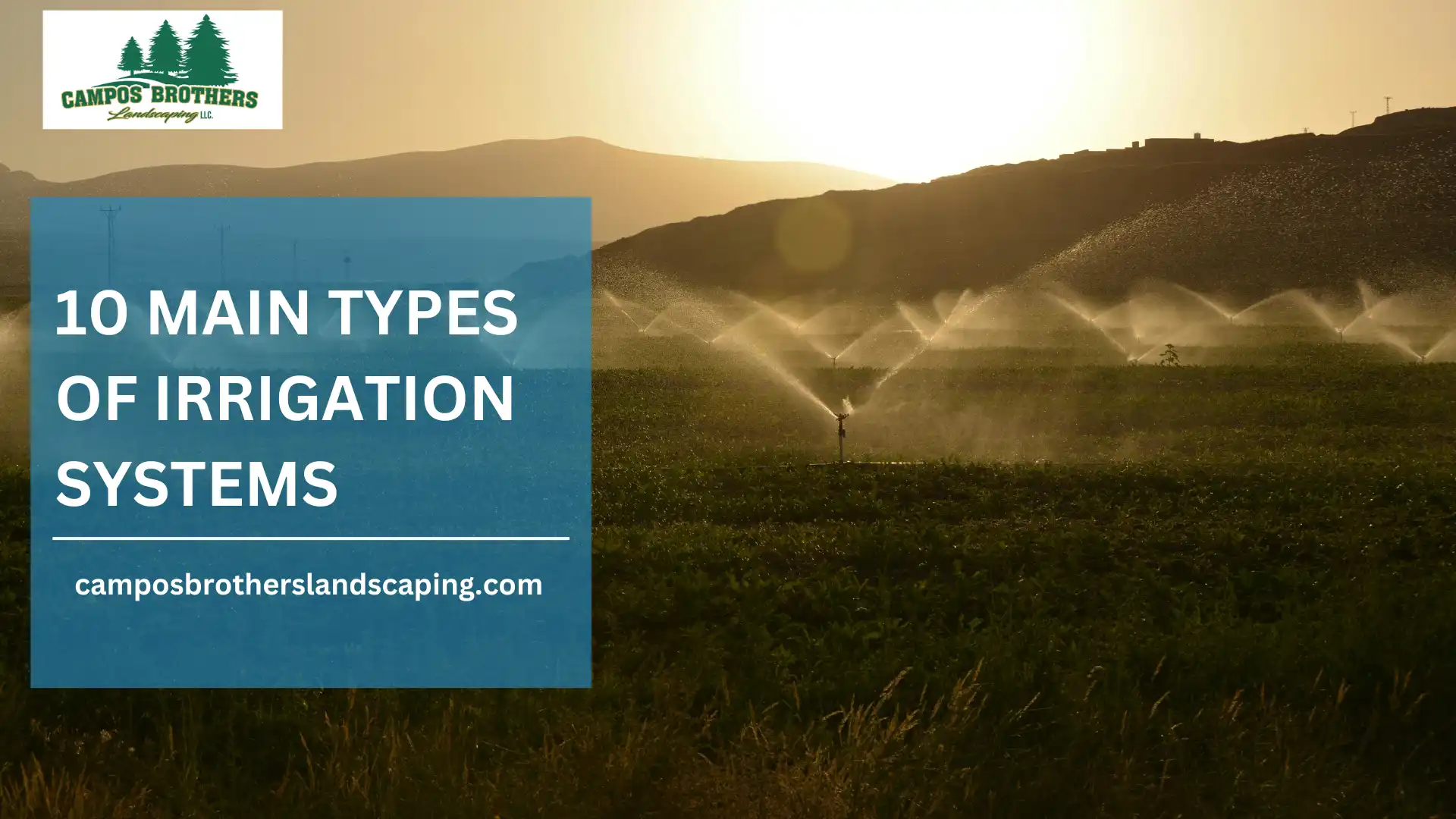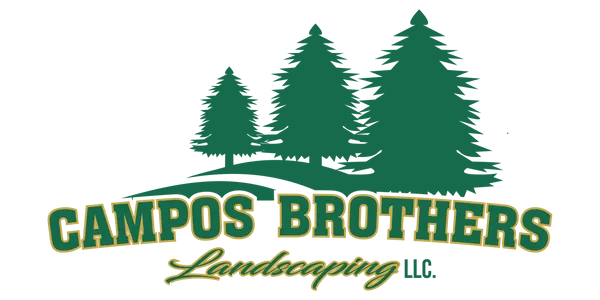Best 10 Types of Irrigation Systems for Modern Properties

Property owners in Shrewsbury often struggle with choosing effective watering solutions for their landscapes. The wrong irrigation system can waste thousands of gallons annually while leaving plants stressed and lawns patchy. Campos Brothers frequently helps homeowners who made costly mistakes by not understanding their options beforehand.
This breakdown covers the Types of irrigation systems that actually work for residential and commercial properties in our area.
1. Introduction
2. Surface Irrigation: Simple and Effective
3. Sprinkler Irrigation Systems: Versatile Water Distribution
4. Drip Irrigation: Precision Water Management
5. Center Pivot Irrigation: Large Area Coverage
6. Comparison of Irrigation System Types
7. How to pick the right Irrigation System
8. Conclusion
Surface Irrigation: Simple and Effective
Surface irrigation uses gravity to distribute water across land areas, making it the most energy-efficient option available though it achieves only 50-60% water efficiency compared to 75-95% for pressurized systems. This approach works particularly well for flat properties with soil that absorbs water readily.
Flood irrigation involves applying water to entire field areas, allowing it to soak into soil naturally. Basin irrigation creates contained areas where water pools temporarily before penetrating soil layers. This method works excellently for mature trees and large shrubs that benefit from deep, infrequent watering cycles.
Furrow irrigation channels water along shallow trenches between planted rows, directing moisture precisely where plants need it while keeping pathways dry.
Border irrigation uses low barriers to control water flow across larger flat areas.
Sprinkler Irrigation Systems: Versatile Water Distribution
Sprinkler systems remain the most popular residential choice because they adapt to virtually any landscape configuration. This irrigation system category includes numerous options designed for different coverage requirements.
Fixed spray heads provide precise coverage for smaller defined areas like flower beds and foundation plantings. Rotary sprinklers cover larger areas through rotating mechanisms that distribute water in circular patterns, operating more efficiently than fixed heads for lawn areas.
Impact sprinklers create powerful streams that cover substantial distances, making them suitable for large open spaces. Micro-sprinklers bridge the gap between drip and traditional sprinkler systems, providing gentle coverage for sensitive plants and newly seeded areas.
Drip Irrigation: Precision Water Management
Drip irrigation carries all our water straight to plant root zones via a network of precision emitters and flexible tubing. This irrigation system uses 30-60% less water in general compared to sprinkler systems while often producing healthier plants.
When deliveries are slow and steady-they allow soil's full absorption without any runoff. This happens even on slopes where sprinkler systems might create erosion problems. Plants receive regular moisture that promotes strong root development and reduces stress during hot weather.
Pressure-compensating emitters maintain consistent flow rates regardless of elevation changes throughout the system. Self-flushing mechanisms clear debris from emitter pathways, reducing maintenance requirements that historically made drip systems less attractive for busy homeowners.
Center Pivot Irrigation: Large Area Coverage
Center pivot systems feature mechanical arms that rotate around central points, creating circular watering patterns across extensive areas. While primarily agricultural, smaller residential versions work well for properties with large lawn sections.
The rotating arms move slowly and continuously, applying water at rates that match soil absorption capacity. This prevents runoff while providing even distribution across the entire coverage area. Variable rate technology allows different arm sections to apply varying water amounts based on specific zone requirements.
Subsurface Irrigation Methods: Underground Efficiency
Subsurface systems operate entirely below ground, delivering water directly to root zones through buried pipe networks. This hidden irrigation system approach eliminates surface evaporation while maintaining optimal soil moisture levels.
Underground installation protects components from weather damage and lawn equipment impacts. The aesthetic advantages include landscapes without visible irrigation equipment. Consistent soil moisture is maintained by root zone irrigation that promotes deeper root development compared to surface watering methods.
Comparison of Irrigation System Types
Water efficiency varies dramatically between system types. Drip systems lead in conservation, subsurface systems eliminate evaporation entirely, while sprinkler systems typically use more water but provide maximum flexibility for different plant types.
Installation costs range from simple and inexpensive options like soaker hoses to complex systems needing professional installation. Operating costs often favor efficient systems through reduced water bills over time. But research shows typical irrigation systems waste 30% of water due to poor management and configuration, emphasizing the importance of professional installation and regular maintenance regardless of system type.
Maintenance requirements differ significantly. Drip systems need regular emitter cleaning, sprinkler systems require periodic head adjustment, while subsurface systems need minimal maintenance once properly installed.
How to pick the right Irrigation System
Success of the system selection starts with assessing your property's unique characteristics. Soil type, drainage patterns, sun exposure, plant varieties, and available water pressure all influence which systems will perform optimally. Consider long-term landscape goals and available maintenance time. Some property owners prefer simple approaches even if they use more water, while others prioritize maximum efficiency regardless of complexity.
Professional soil testing reveals crucial information about drainage rates and composition that affects system performance. In Shrewsbury specifically, soils are slowly permeable brownish fine loamy and fine silty over clayey soils with seasonal waterlogging issues and inherently low available water contents, making proper drainage assessment especially critical. Clay soils require different strategies than sandy soils, and sloped areas present different challenges than flat terrain. Smart irrigation controllers with weather sensors and soil moisture monitoring can reduce water usage by an additional 26-34% through automated adjustments based on real-time conditions.
Many successful installations combine multiple system types in different landscape zones. Lawn areas might use sprinklers while garden beds utilize drip irrigation and trees receive specialized watering systems. Climate patterns in Shrewsbury create specific opportunities for different irrigation approaches. Understanding seasonal rainfall, temperature ranges, and humidity levels helps predict which systems will perform best throughout growing seasons.
Conclusion
Selecting the appropriate irrigation system transforms landscape maintenance from constant worry into automated support for healthy plant growth. These main options-from gravity-fed surface systems to sophisticated subsurface networks-each offer specific advantages for different applications and property conditions.
Understanding your choices before installation prevents costly mistakes. Proper system management, including smart technology integration, creates outdoor spaces that thrive with proper water management. For Shrewsbury residents seeking professional irrigation system design and installation services, Campos Brothers provides expertise in matching optimal solutions to local conditions and individual landscape requirements.
